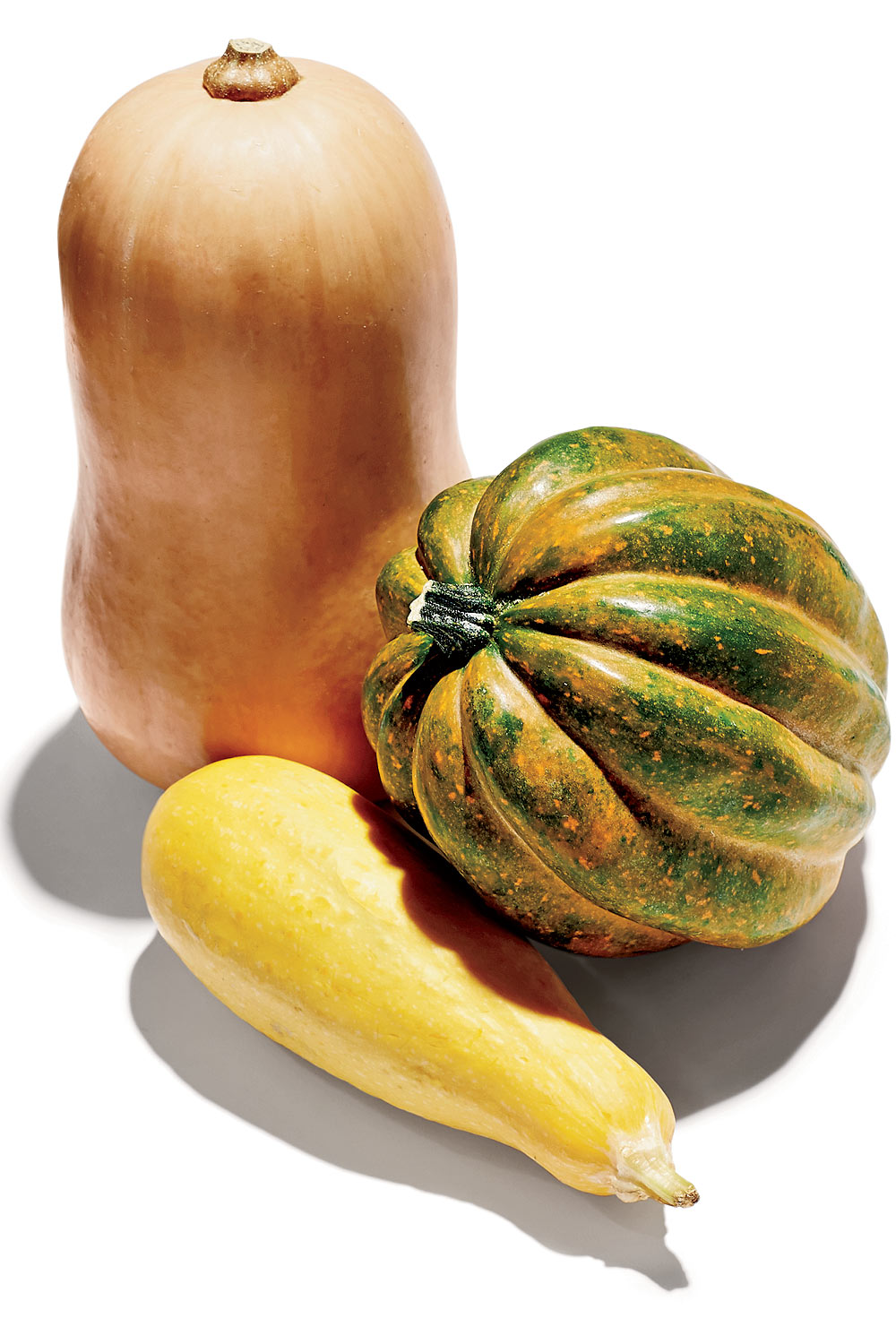“It’s a memory thing,” says Steve Chiappetti, chef-partner of J. Rocco Italian Table & Bar (749 N. Clark St., 312-475-0271), about squash. Chiappetti’s grandfather grew the gourds on his farm in western Illinois, and his mom cooked them a million different ways. He just about swoons recalling her purée with butter and cream. “It’s a very earthy type of fruit, and it has great seasonality. And versatility.” Case in point: Chiappetti’s delectable soup can keep you cool when Indian summer hits, or toasty warm on a crisp fall day.
Steve Chiappetti’s Squash and Fontina Soup
Yield: 8 servings
Prep time: 45 minutes
| 4 lb. | Mixed squash (acorn, butternut, and yellow) |
| ¼ cup | Olive oil |
| Salt and pepper to taste | |
| 4 | Chicken bouillon cubes |
| ¼ cup | Leeks, diced |
| 2 | Bay leaves |
| ½ cup | Heavy cream |
| ½ lb. | Fontina |
| Pumpkin seeds, toasted (optional garnish) |
1. Peel, deseed, and dice the squash. Toss with olive oil, salt, and pepper. Sauté in a large skillet until the pieces are soft and lightly browned (10 to 12 minutes). Set aside.
2. Boil (or microwave) the bouillon cubes in 4 cups of water; stir until dissolved. Set aside.
3. Heat a little olive oil in a stockpot and add the leeks. Gently sauté until the leeks are translucent and soft. Add the bay leaves and the squash.
4. Pour the bouillon over the squash, stir, and bring to a boil. Lower the heat and add the cream. Stir for one more minute and discard the bay leaves.
5. Transfer the mixture from the stockpot to a blender and blend until smooth. Return to the pot.
6. Over low heat, whisk in the cheese until it is fully incorporated. Serve hot or refrigerate overnight for a cold soup. Garnish with toasted pumpkin seeds.
TIP: If reheating the soup, use the microwave to avoid burning the cheese.
Next: A spicy squash recipe from Found’s chef, Nicole Pedersen
“Squash lasts longer than any other fruit,” says Nicole Pederson, executive chef of Found (1631 Chicago Ave., Evanston, 847-868-8945). They can be kept at a cool temperature for six to eight weeks without a problem—especially butternuts. Delicata is an exception—they don’t keep as long. If you have a very young delicata, the skin is so tender you won’t need to peel it.
Pederson likes to mix squashes, as she does in this recipe. “The butternut is so sweet, and the other two have a bit of an earthy quality to them,” she says. As for the harissa, use a combination of sweet and spicy peppers; otherwise, it will be too hot. (My personal experience was that the harissa tasted great on just about anything. Next time, I will double the recipe–just to have it around.)
Nicole Pederson’s Fall Squash with Harissa
Squash
| 4 lb. | Mixed squash (red kuri, butternut, delicata) |
| Vegetable oil |
1. Peel and deseed squash. Cut into bite-size pieces. They need not be perfect, but they should be fairly uniform in size.
2. Over medium heat, sauté squash in a small amount of oil until golden brown on all sides. Turn often so the squash browns evenly.
3. Toss with the harissa until each piece is evenly coated.
Optional: Garnish with toasted pumpkins seeds and cilantro.
TIP: You can make the squash ahead of time and reheat when you are ready to mix with harissa and serve.
Harissa
| 1 lb. | Mixed chilies (red Fresno, sweet banana, Anaheim) |
| 2 | Guajillo or ancho chilies, rehydrated in warm water |
| 6 | Garlic cloves, cut in half lengthwise |
| ½ tsp. | Caraway, ground |
| 1 tsp. | Coriander, ground |
| ¼ tsp. | Cumin, ground |
| ¾ cup | Olive oil |
| 2 Tbsp. | Red wine vinegar |
| Salt to taste |
1. Blister the chilies in a hot sauté pan with a little oil. When the peppers have cooled, remove the seeds and the skin.
2. Lay the garlic in a cold sauté pan, cut side down, with no oil. Cook over a low flame until the garlic gets darkly toasted, but not burned. Flip and continue cooking until tender.
3. Place the chilies, garlic, spices, olive oil, vinegar, and salt in the blender and purée. Taste and adjust seasoning if needed.
4. Use immediately or store in an airtight container for up to one week.
TIPS: If you want extra spicy harissa, throw in chilies such as jalapeños or habaneros. Harissa is versatile; a spoonful here and there can jazz up your favorite chicken or fish recipes. “Amazing with lamb,” says Pederson.



